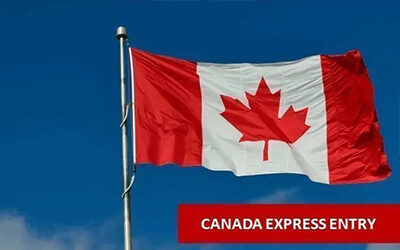Canada’s system for categorizing occupations is called the National Occupational Classification (NOC). The NOC is reviewed every year, and updated every five years to reflect Canada’s changing labour market. In the fall of 2022, Canada’s immigration system will alter the way it defines occupations. A new TEER system is being introduced.
The reforms will affect some applicants from certain economic classes and foreign workers, however, the federal administration has yet to specify which applications will be affected.
Canadian Immigration and the NOC
The NOC is important for Canadian immigration because it is used by IRCC to manage many immigration programs, specifically the skilled worker immigration programs and the Temporary Foreign Worker Program (TFWP). An immigrant or temporary foreign worker must meet the NOC eligibility criteria of the program they are applying to.
NOC 2016 is now being used by the Department of Immigration, Refugees and Citizenship Canada (IRCC) as well as Canada’s provinces and territories to determine eligibility for skilled worker immigration programs.
NOC 2016 has also been used by the Department of Employment and Social Development Canada (ESDC) to assess Labour Market Impact Assessment (LMIA) submissions.
Skilled worker immigration applicants must demonstrate job experience in a NOC that falls under one of the following codes under Express Entry:
NOC 0: Skill type 0 jobs are typically management-oriented.
NOC A: Skill type A jobs are professional and usually require the completion of a university degree; or
NOC B: Skill type B jobs are skilled trades positions that often require a college diploma or apprenticeship training.
NOC C: Skill type C jobs are intermediate that usually call for high school and/or job-specific training.
NOC D: Skill type D jobs are labour jobs that usually give on-the-job training.
New TEER system replaces NOC skill levels
The Canadian government will now categorize employment based on a new Training, Education, Experience, and Responsibilities (TEER) system, rather than the present practice of categorizing jobs based on skill type.
NOC skill levels are currently divided into four categories: A, B, C, and D.
NOC 2021 departs from this approach by introducing the TEER system, which is divided into six categories: TEER 0, 1, 2, 3, 4, and 5.
The TEER System
TEER 0: Management occupations.
TEER 1: Completion of a university degree (bachelor’s, master’s, or doctorate); or Several years of experience in a specific occupation from TEER category 2 (when applicable).
TEER 2: Completion of a post-secondary education program of two to three years at community college, institute of technology or CÉGEP; or
Completion of an apprenticeship training program of two to five years; or
Occupations with supervisory or significant safety (police officers and firefighters) responsibilities; or several years of experience in a specific occupation from TEER category 3 (when applicable).
TEER 3: Completion of a post-secondary education program of fewer than two years at community college, institute of technology or CÉGEP; or
Apprenticeship training of fewer than 2 years; or more than six months of on-the-job training, training courses, or specific work experience with some secondary school education; or several years of experience in a specific occupation from TEER category 4 (when applicable).
TEER 4: Completion of secondary school; or several weeks of on-the-job training with some secondary school education; or several years of experience in a specific occupation from TEER category 5 (when applicable).
TEER 5: short work demonstration and no formal educational requirements.
Why the Canadian government is replacing NOC skill levels with TEERs
As per Statistics Canada, this change is necessary for many reasons. The NOC focuses on occupation and not skills. Introducing the new TEER system will focus more on the education, skills and experience required to work in a given occupation. The importance of various factors such as training, education, and experience will be assessed in the new TEER system.
Statistics Canada also argues that the previous NOC categorization system artificially creates a low versus high skilled categorization. The TEER will move away from such a categorization in order to accurately capture the skills and experience required in each occupation.





0 Comments